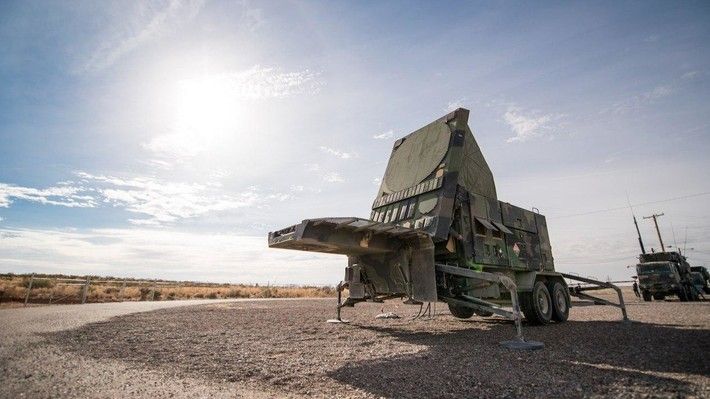European Air and Missile Defense – A Call for Integration [OPINION]

In order to deter and/or prevent Russia from the effective employment of their air and missile assets, the US and its NATO allies must develop a “truly” integrated air and missile defense system for Europe – a complex “system of systems” approach to which the level of effectiveness is directly related to the level of interdependence between sensors, shooters, and command and control (C2) – as Brig. Gen. David Baczewski, U.S. Air Force (ret.), a former Deputy Director of Operations United States European Command and a F-16 pilot with over 4,000 flight hours writes for Defence24.pl.
In an increasingly complex global security environment, in which every domain is contested – air, land, sea, space, and cyberspace, the potential for air and missile defense forces to shape and influence regional security is no more prevalent than in Europe. The United States and its NATO Allies face an aggressive Russia to the east – a near-peer adversary with the capability to contest US and NATO defenses with a full suite of technologically advanced air and missile threats.
To fully appreciate NATO’s security concern, one needs to look no further than recent news reports of Russia’s deployment of the nuclear-capable Iskander missiles in Kaliningrad, a Russian exclave on the Baltic Sea, in which the missiles would be able to reach large parts of NATO members Poland, Lithuania, Latvia, and Estonia. In order to deter and/or prevent Russia from the effective employment of their air and missile assets, the US and its NATO allies must develop a “truly” integrated air and missile defense system for Europe – a complex “system of systems” approach to which the level of effectiveness is directly related to the level of interdependence between sensors, shooters, and command and control (C2). This approach would facilitate a dynamic defense design and allow the warfighter to use any sensor and the best weapon from any system to achieve mission objectives.
To understand the high level of interdependence required in achieving integration, a colleague of mine once described European Integrated Air and Missile Defense (IAMD) as a situation where “complexity meets complexity … where the sum of the parts must be greater than the whole.”
In my experience this level of integration must be “baked in” from the beginning. Acquiring stand-alone, stove-piped systems with the attempt to achieve integration in an “after-market” approach is inadequate for the air and missile threats of today and tomorrow. To place integration at the forefront of European IAMD, the US and its NATO allies need to adopt an Open Systems Architecture approach to both future systems acquisition and future systems upgrades.
As outlined in the Williams Foundation Report, INTEGRATED AIR & MISSILE DEFENCE STUDY; The Challenge of Integrated Force Design, an open architecture approach would provide an adaptable and readily upgradable technology basis for both new and legacy systems as well as support the development and integration of future capabilities. The application of an open architecture approach across the European IAMD system will enable rapid capability insertion, software commonality, interoperability, and integration. A positive step towards adopting this approach within the European theater is Poland’s Wisla program – Poland’s medium-range air and missile defense program.
In a deal finalized last week of March, Poland will procure for its Wisla program a unique Integrated Air and Missile Defense (IAMD) Battle Command System (IBCS)-enabled Patriot Configuration-3+. The decision by Poland to procure IBCS is a definite departure from the classic “prime contractor provides all approach” and will ensure integration is “baked in” from the very beginning.
IBCS is sensor and weapon systems agnostic – a revolutionary C2 system which uses a modular open systems architecture approach to enable “any sensor, best shooter” in the defense design. IBCS is designed to create an “integrated” fire control network with the participation and coordination of multiple distributed sensors and weapons – both current and future.
Poland’s acquisition of a C2 system for its Wisla program is not without risk– both developmental and operational. The developmental risk associated with IBCS is that the program remains in the developmental stage, albeit the later stages of development with significant progress documented during the most recent rounds of operational testing. The operational risk lies with the C2 alternative to IBCS – a stove-piped command-and-control system that is neither adaptable nor suitable for the future threat, and hence introduces greater operational risk over the long run.
Poland’s confidence in accepting the developmental risk associated with IBCS establishes two important data points with respect to the Wisla program. One, Poland averts a potential future gap in C2 capability – a gap that would require an “after-market” solution at best. Two, Poland displays tremendous leadership in the advancement towards an integrated European air and missile defense system.
The Russian air and missile threat to Poland and all of Europe is real. Therefore, it remains imperative that the US and its NATO allies not only work together to ensure the coordination of air and missile defense assets, but actually see to the creation of a “truly” integrated European air and missile defense system.
A sophisticated network of interdependent sensors, shooters, and command and control that utilizes an open systems architecture approach to enable a dynamic defense design. A defense design which takes full advantage of “any sensor, best shooter” with the requisite integration and capability to deter and/or prevent Russia from the effective employment of their technologically advanced air and missile assets.
Retired USAF Brig. Gen. Dave Baczewski is an independent leadership and defense consultant. A former F-16 Wing Commander and Operational Test Pilot with over 4,000 flight hours, he last served on active duty as Deputy Director of Operations United States European Command.
